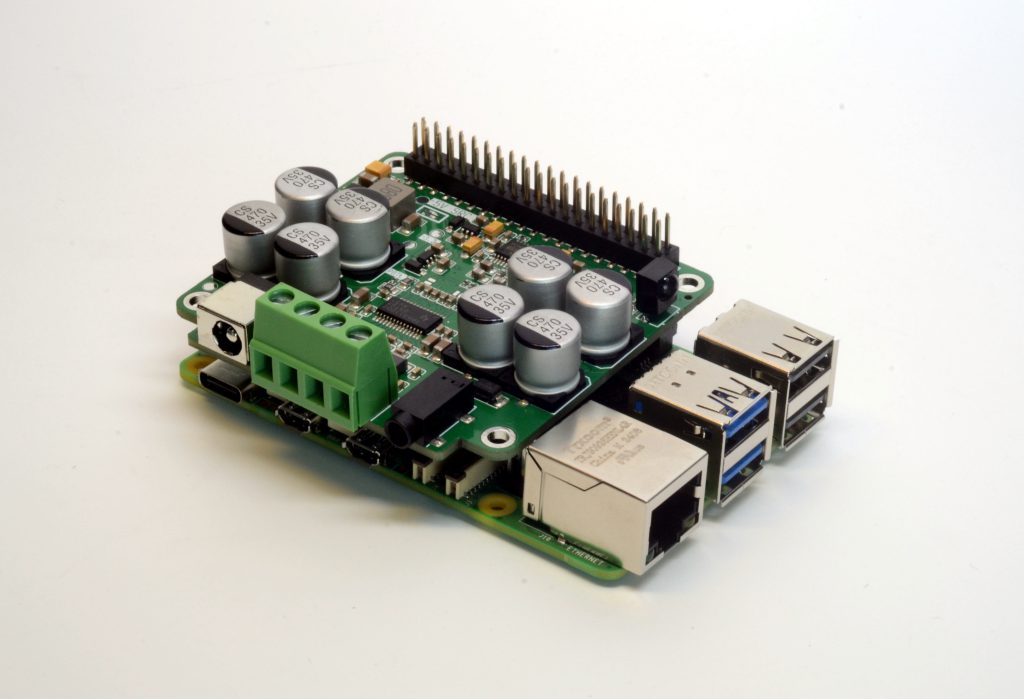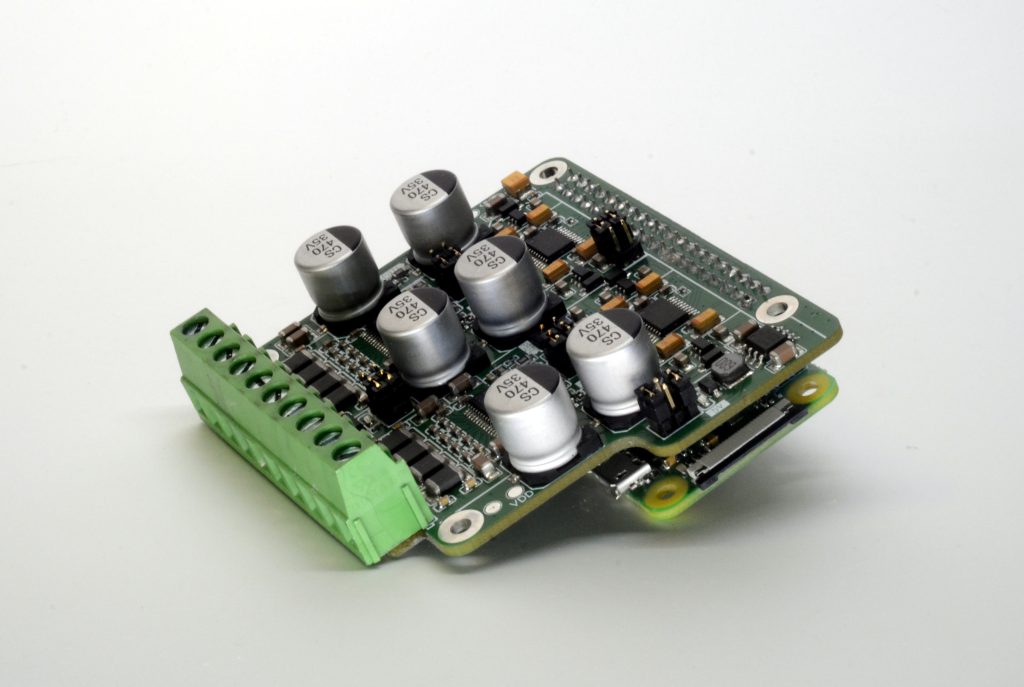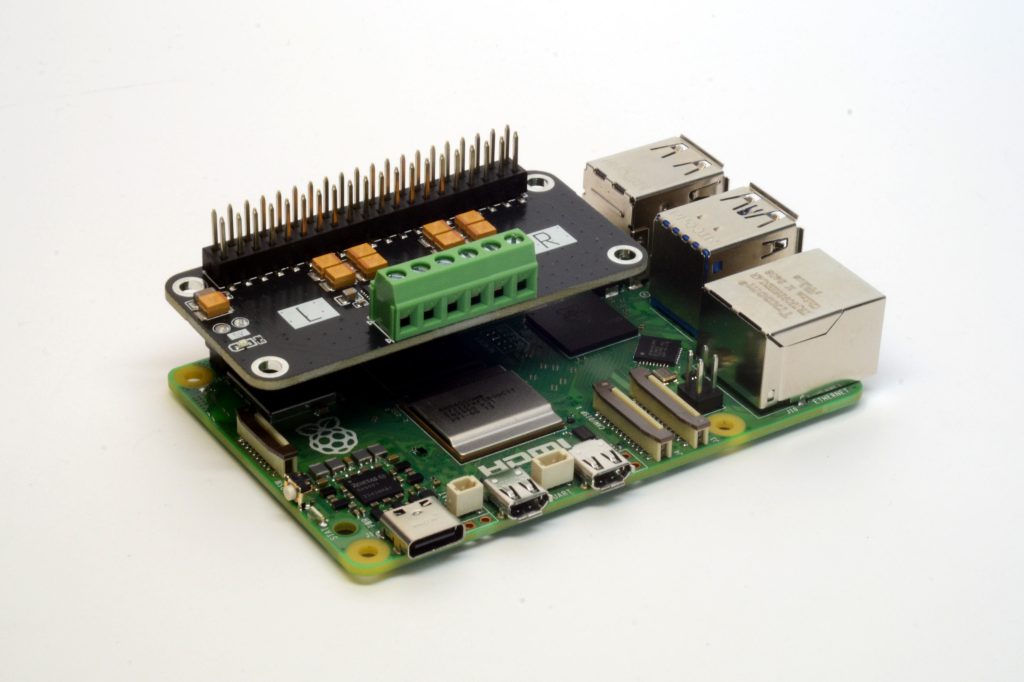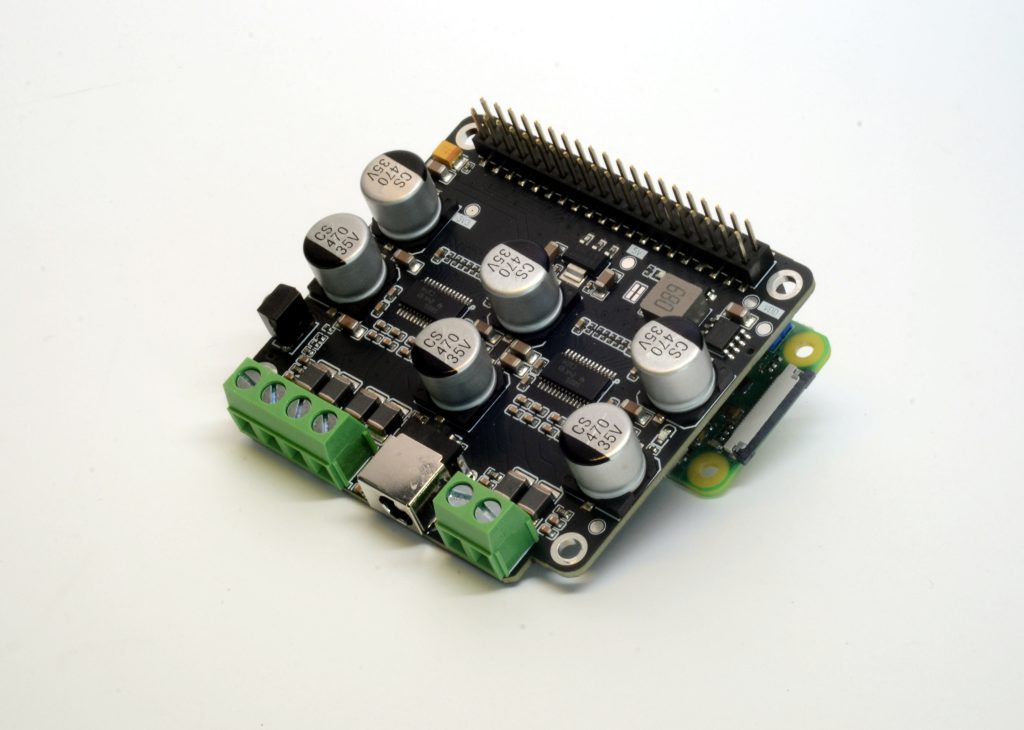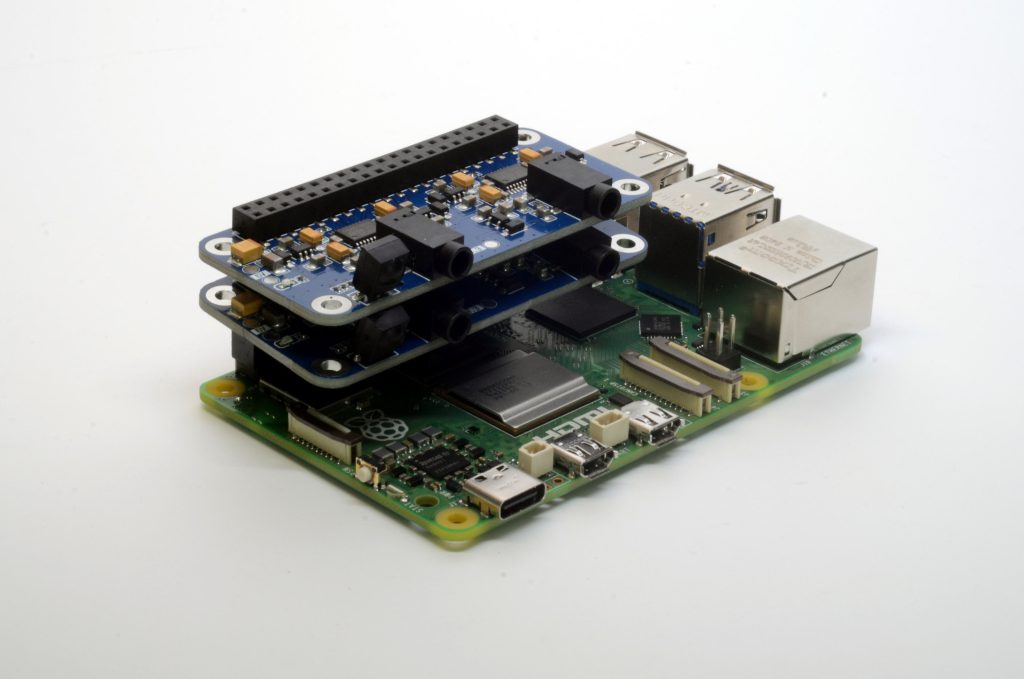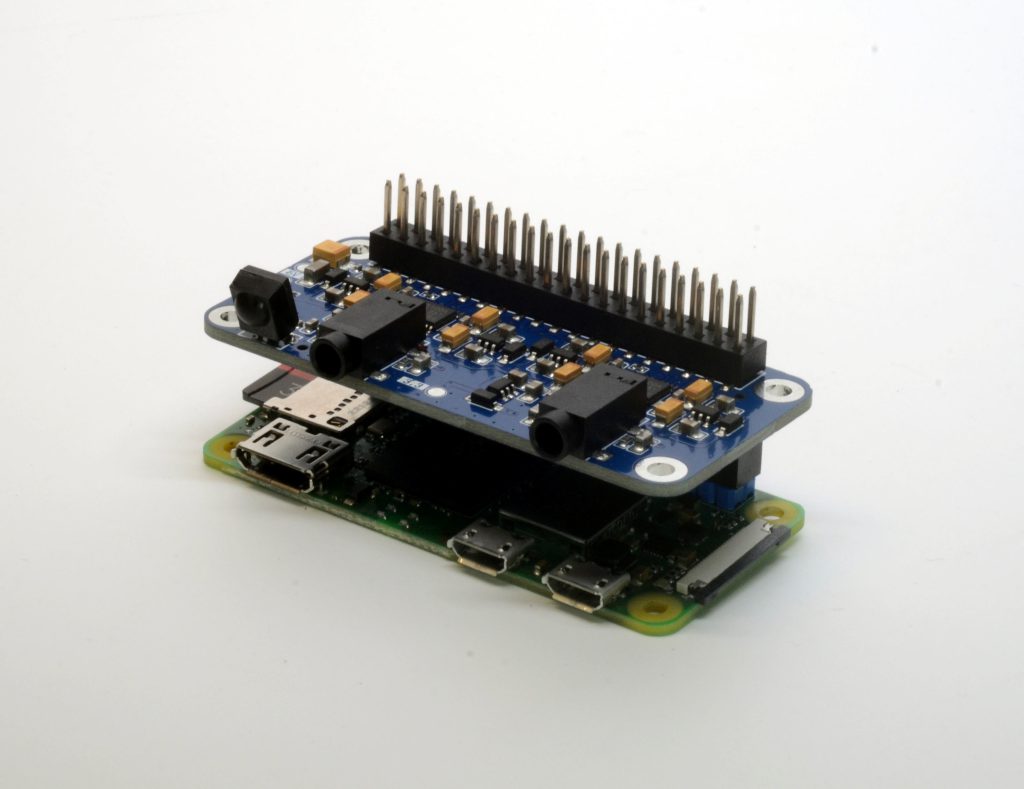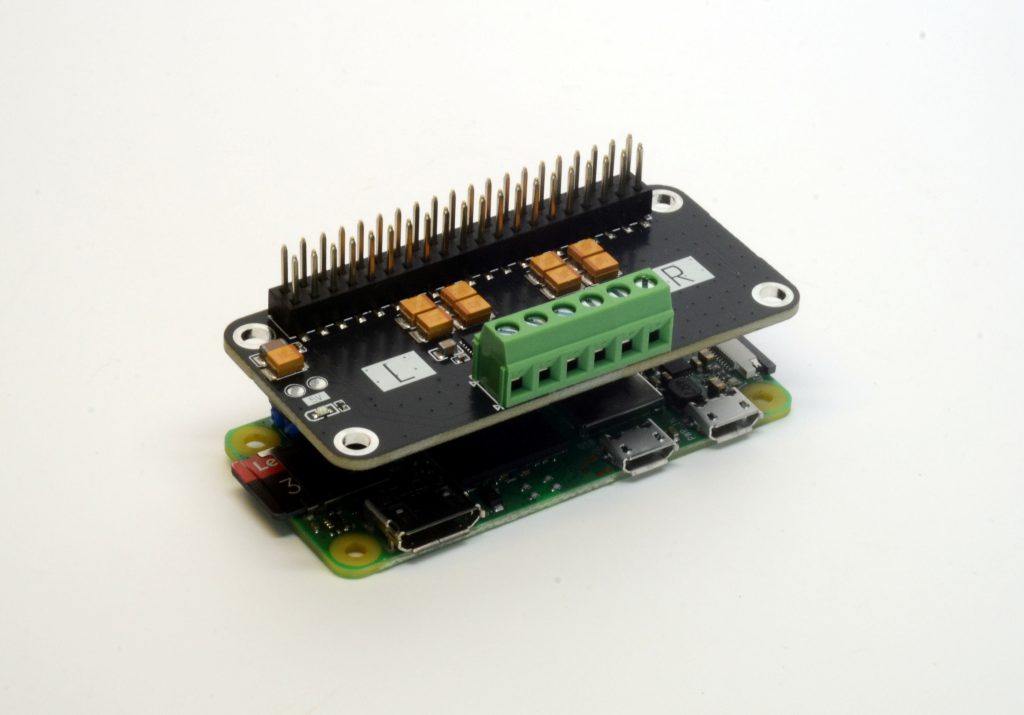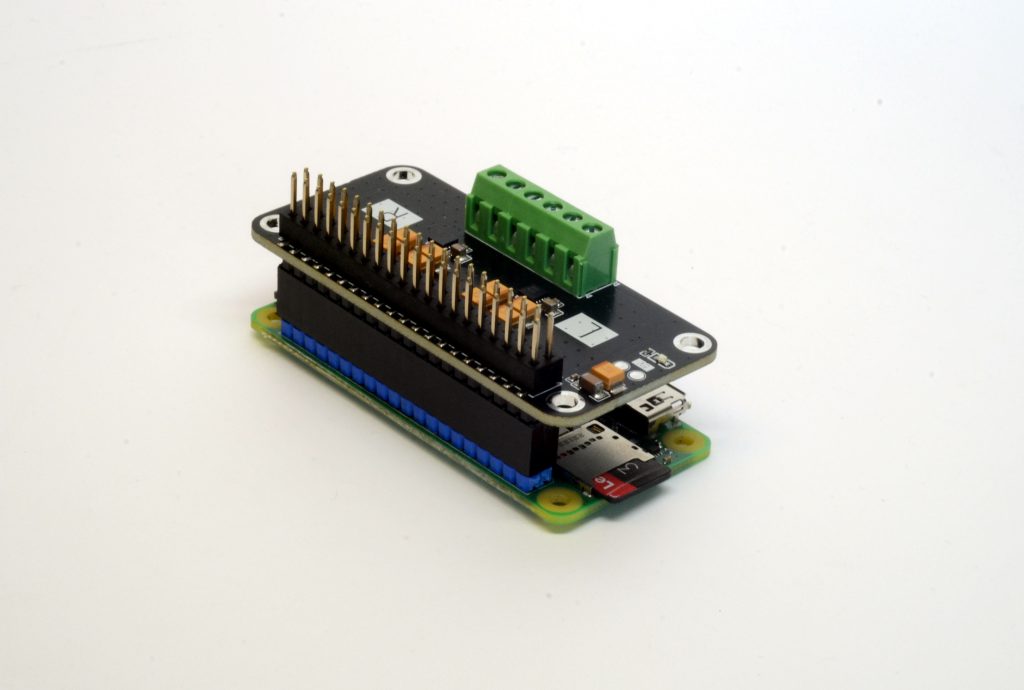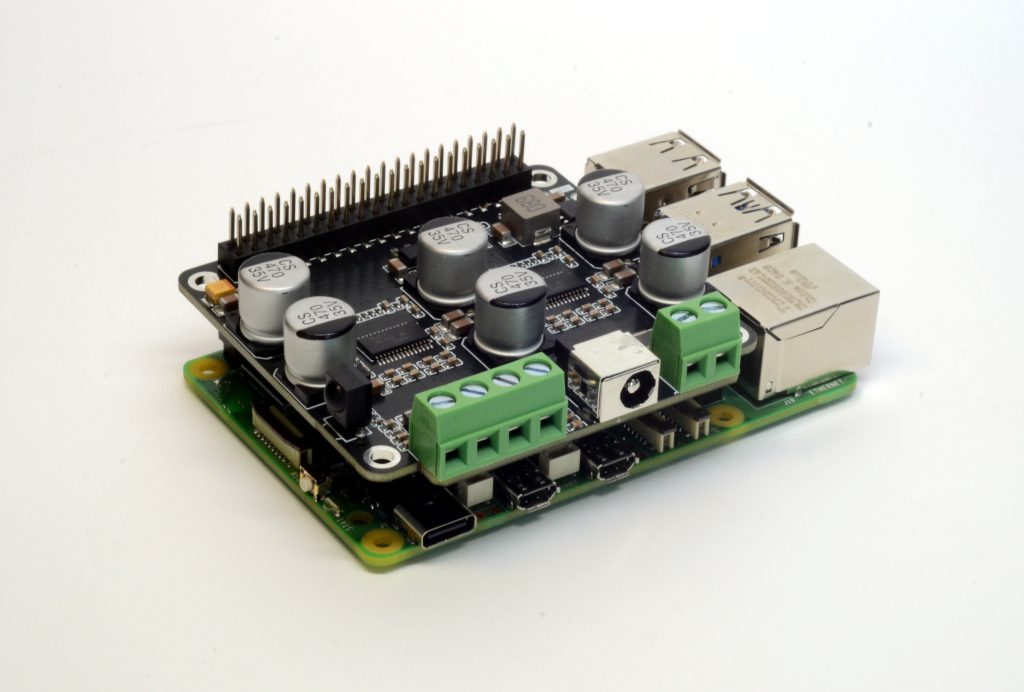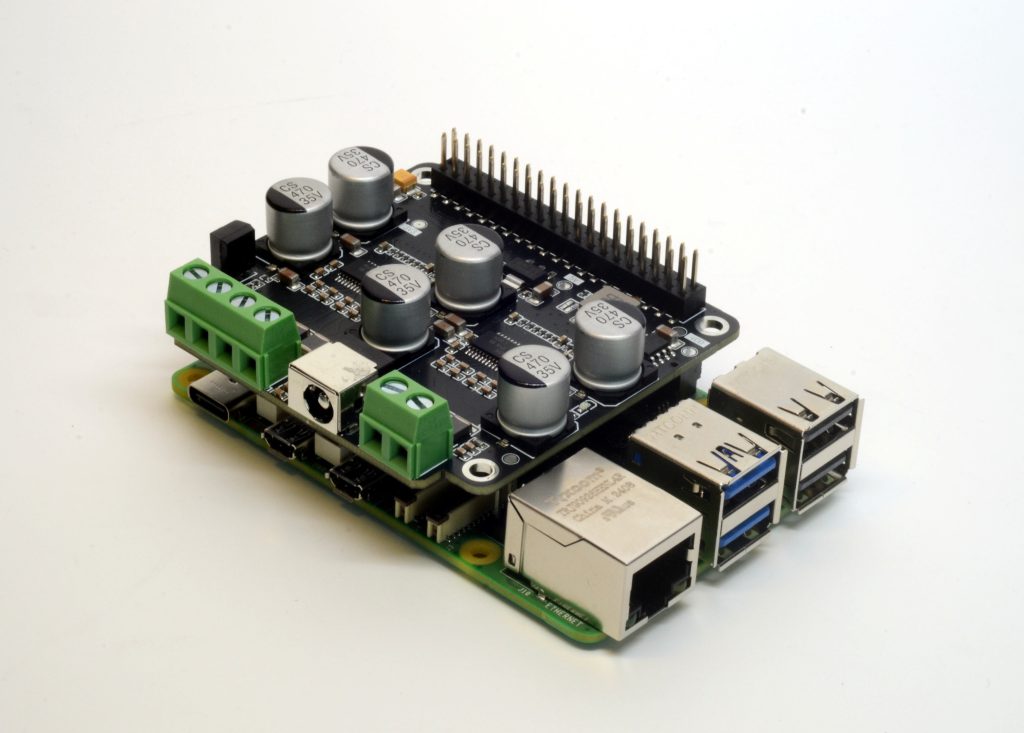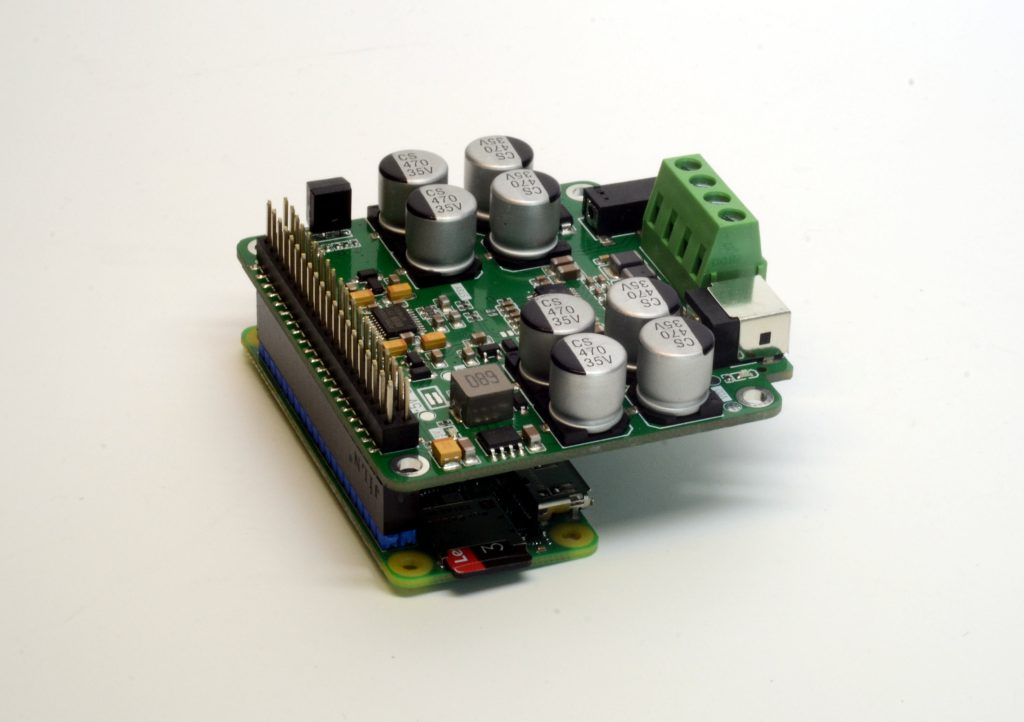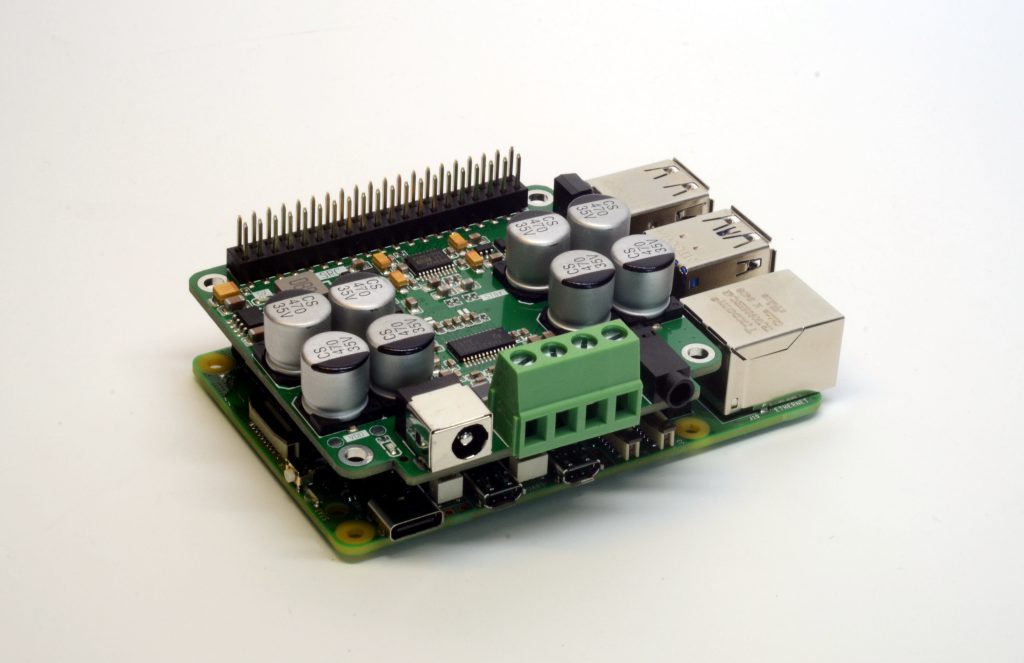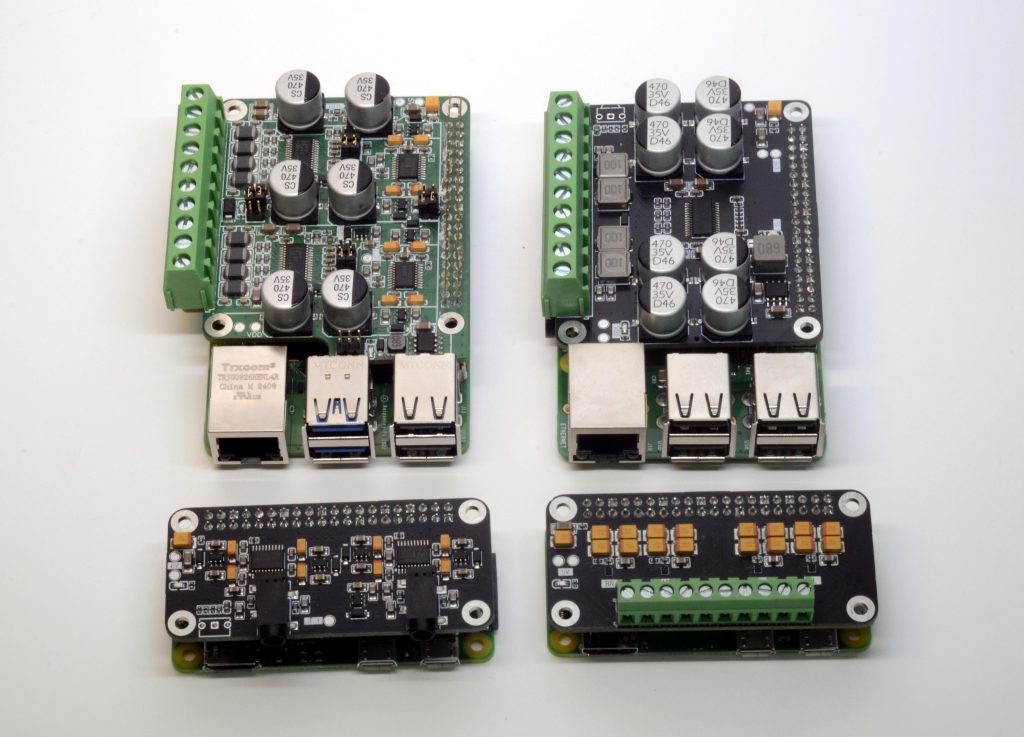
What is it?
The Raspberry Pi Home Media Center is a series of compact and neatly designed hardware projects that combine the power of the Raspberry Pi Zero board and the Hi-Fi DAC.
The Raspberry PI Media Center Hats is a series of boards designed to solve two weak points of the original Media Center – (a) the possibility to work with any Raspberry Pi and (b) added cost of Alu case that is not always required in the project.
Raspberry Pi HiFi Hat is the lightweight implementation of the PCM5100 DAC in a Hat shape. It has two flavors: 1X is a traditional DAC that works with any Raspberry Pi out there, while 2X is specifically designed for Raspberry Pi 5 and implements two stereo-DACs which Raspberry Pi 5 users can use independently. Using two of them you can have up to 4 stereo outputs totalling 8 channels of audio.
The Amped Raspberry Pi Hat is a PCM5100 HiFi DAC combined together with a highly efficient TPA3110D2 D-class amplifier. It brings all the best from the HiFi model and adds an onboard amp to form a complete solution that can be paired with speakers directly. It uses an external power source to feed hungry amps and host Pi using an onboard drop-down converter. Following the same pattern, 1X version is a single DAC+AMP combo that will work with every Pi, while 2X is a Raspberry Pi 5 specialty, that can drive 4 channels independently. 2X boards use 4-layer PCBs to ensure good signal protection to keep that noise low.
Loud Raspberry Pi Hat uses MAX98357A DAC in a cost-efficient Hat form. 1X version can be used with any Raspberry Pi, while Raspberry Pi 5 users can use two pairs of speakers independently on the 2X version. Hat will pull the juice from the Pi’s 5V line, or power the Pi itself using screw connectors, so you can make sure enough power is delivered to both boards.
Louder Raspberry Pi Hat is a top-of-the-range model that uses a modern highly capable TAS5805M DAC and is aimed to be paired with medium-to-large speaker systems. Compared to Media Center it drops the USB-PD in favor of an external power supply up to 28V (as opposed to 20V over PD) and has a step-down converter onboard to deliver 5V to the Pi, so you need only a single power source for everything. Otherwise, it delivers audio through the same highly capable DAC, capable of driving large speakers or tearing apart small ones. The 2X version is a bit special since it uses a TAS5805M capability to chain DACs using the same I2S data source and apply a DSP pipeline on every DAC to deliver flexible speaker combinations. This Hat specifically aimed to deliver a 2.1 speaker configuration with a power budget dedicated to the subwoofer around double of the satellite speaker.
This versatile media center provides a low-cost, customizable, and fully open-source hardware platform for home entertainment. It aimed to support Volumio, Mopidy, or any custom firmware you may come up with
Why did I build it
Initially, I created a line of OrangePi-based devices (Hi-Fi version, followed by Amped version) focusing on the hardware platforms that were available for purchase. Lately, when the chip shortage era is mostly behind us, I’m switching my focus back to the most popular DIY hardware platform to allow a truly seamless and rewarding experience building a media center.
At this point, I’m adding a set of peripherals that I’d use myself on a daily basis (In fact I do). Including an IR reader of remote controls and the possibility to use multiple channels in a multi-room setup.
Why Raspberry Pi?
Community support for Raspberry’s line of products is beyond any expectation. Kernel support, necessary drivers, device tree maps, and going all the way down to media center Linux distributions – it is all out there.
Key features (HiFi Raspberry Hat)
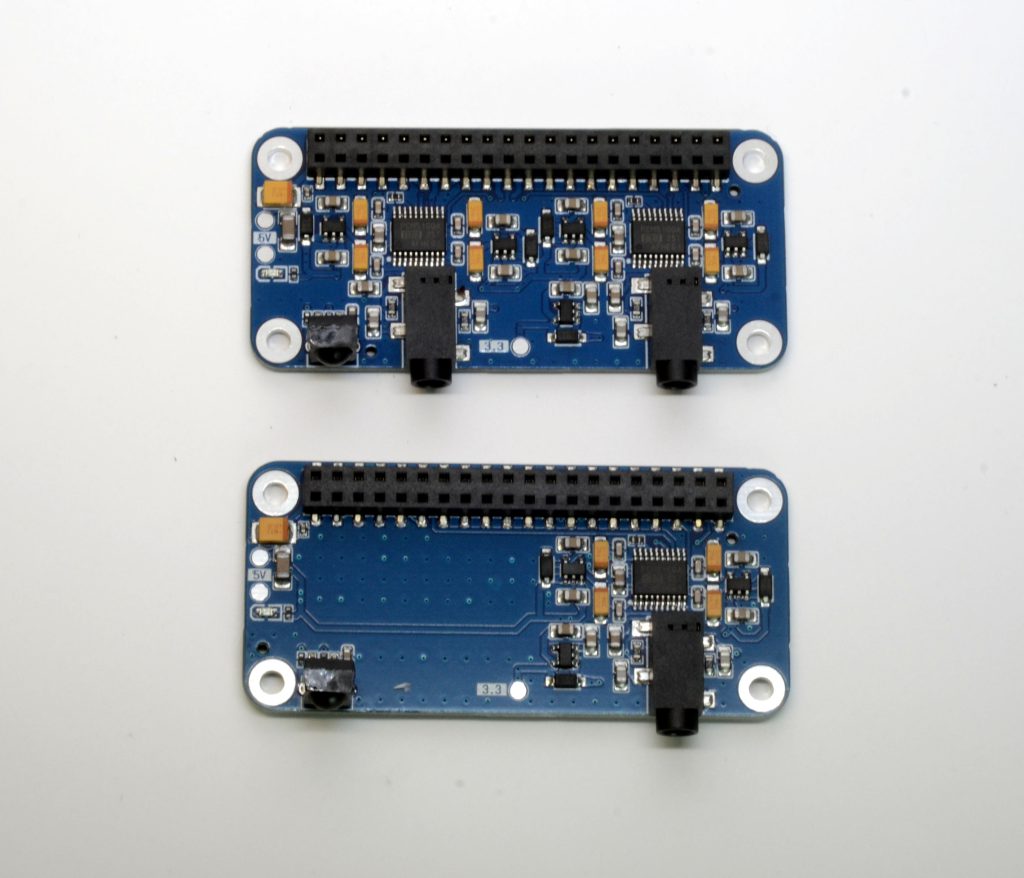
- PCM5100A 32bit Stereo DAC
- 2.1 VRMS Line level output
- 100 dB typical noise level
- Double LP5907 3.3 V Ultra-Low-Noise LDO per side
- 5V sources from host Raspberry Pi
- Mechanical dimensions (WxHxD): 65mm x 30mm x 15mm
Key features (HiFi-Amped Hat)
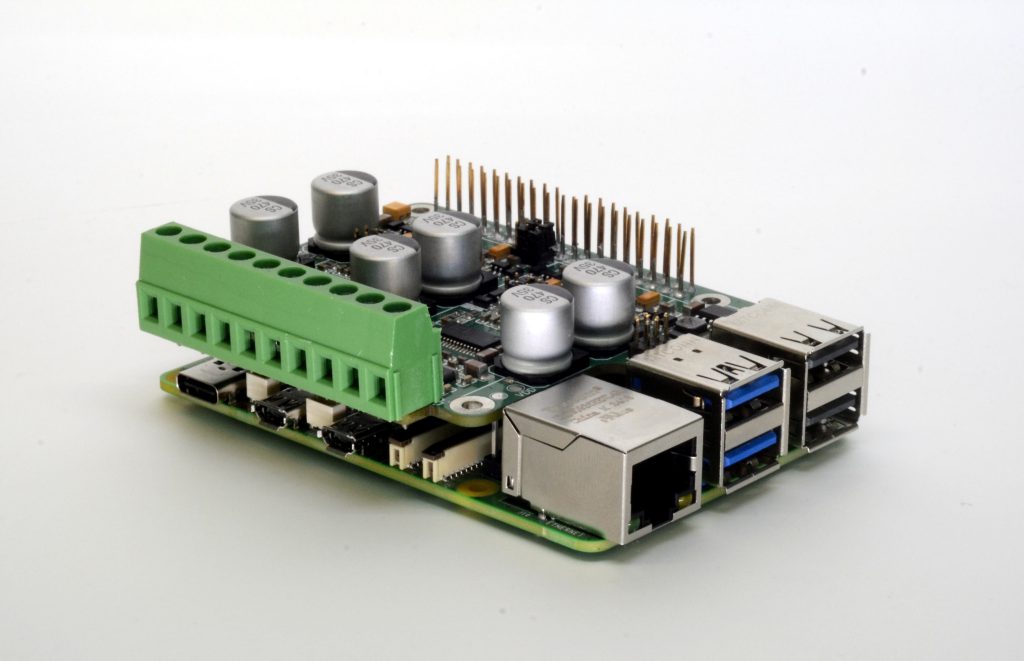
- PCM5100A 32bit Stereo DAC (times 2 on X2 version)
- 100 dB typical noise level
- Double LP5907 3.3 V Ultra-Low-Noise LDO per side
- TPA3110D2 D-Class amp
- 2x 25W (8Ω, 1% THD+N) at 22V (times 2 on X2 version)
- 2x 22W (4Ω, 1% THD+N) at 16V (times 2 on X2 version)
- 1x 40W (4Ω, 1% THD+N) at 20V (bridge mode) (times 2 on X2 version)
- Require 8..26V from external source
- 5V drop-down converter powering the host Raspberry Pi
- Mechanical dimensions (WxHxD): 70mm x 61mm x 20mm
Key features (Loud Raspberry Hat)
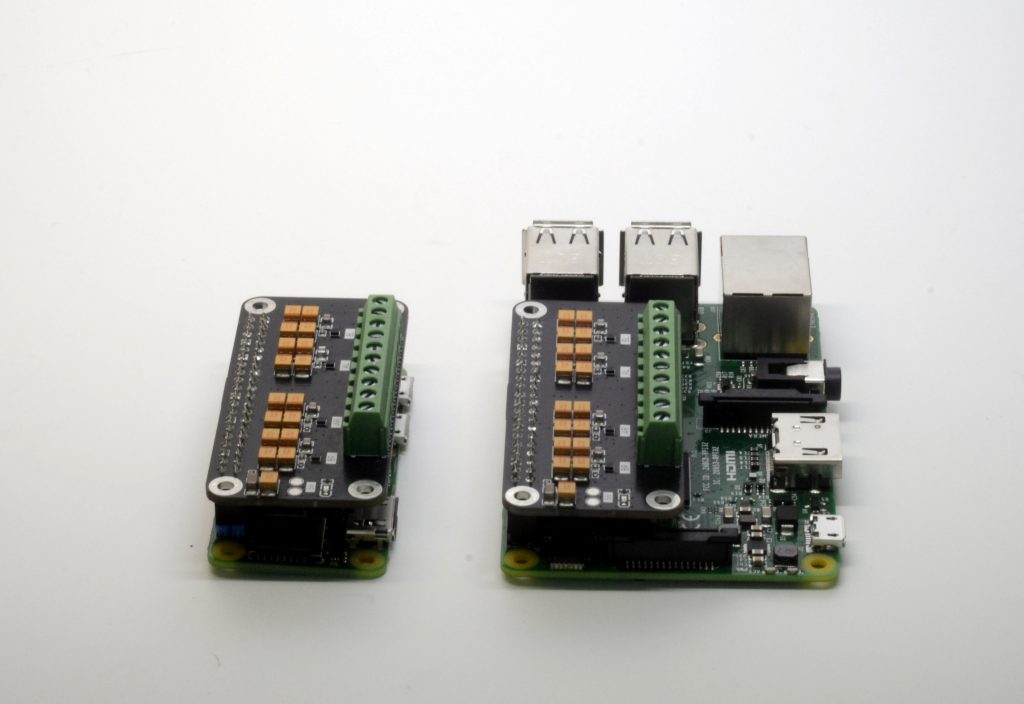
- Dual I2S MAX98357 DAC with built-in D-Class amp (times 2 on X2 version)
- 5W per channel on 4 Ohm load (3W on 8 Ohms)
- Up to 92% efficiency
- Dual screw-terminal speaker output
- Require 5V wall power adapter (powers Pi) or source power from Pi
- Mechanical dimensions (WxHxD): 65mm x 30mm x 20mm
Key features (Louder Raspberry Hat)
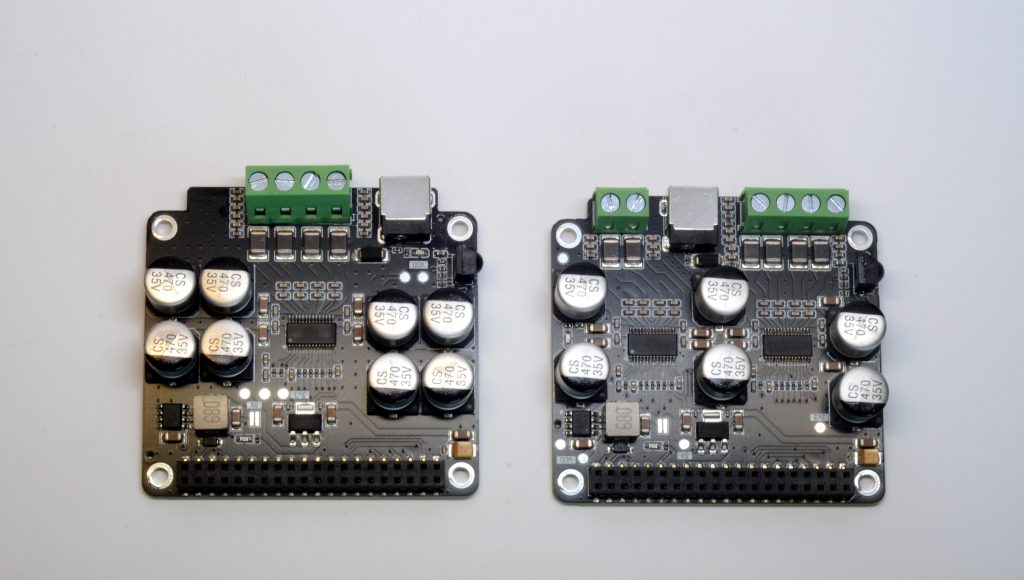
- TAS5805M 32bit Stereo DAC
- 2.0 (X1) and 2.1 (X2) speaker configurations
- 2x 32W (8Ω, 1% THD+N) at 24V
- 1x 55W (4Ω, 1% THD+N) at 24V (Brige mode)
- Require 7..28V from external source
- 5V drop-down converter powering the host Raspberry Pi
- Mechanical dimensions (WxHxD): 65mm x 56mm x 20mm
How to use
Both software and hardware documentation can be found on the project’s Github. You can follow project progress at Hackaday
Raspberry Pi runs Armbian, Volumio, and Mopidy, but before any of them can use PCM5100 DAC, it needs to be configured.
Setting up an external DAC is as simple as enabling a built-in overlay.
The Louder version of the board configured with the help of sister repo
Where to buy
You may support our work by ordering this product at Tindie (coming soon)
- HiFi Raspberry Pi Hat at Tindie and Elecrow
- Hifi-Amped Raspberry Pi Hat at Tindie
- Loud Raspberry Pi Hat at Tindie
- Louder Raspberry Pi Hat at Tindie and Elecrow



